“Abura Soba” has become a well-known dish, experiencing a unique evolution in Japan separate from traditional ramen. With intriguing stories surrounding it, this noodle dish captures attention from not only Japan but also all around the world. In this article, we are going to explore this fascinating dish – its origins, distinct characteristics, and the cultural significance it holds in Japanese cuisine.
What is Abura Soba?
“Abura Soba” (or Oil Soba) is a type of ramen from Musashino City, Tokyo, popular in the Tama region. What makes it unique is that it doesn’t have soup like traditional ramen. It has warm noodles with a tasty sauce. The sauce is usually made from soy and can be personalized with extra things like onions, garlic, eggs, chashu, and bamboo shoots. It is a rich and hearty ramen, different from the lighter ones, and that makes lots of people enjoy it.
Abura Soba’s essence lies in a base of sesame oil at the bottom of the bowl, combined with a soy-based sauce. The dish is typically enjoyed by adding vinegar and chili oil on top, mixing it thoroughly as you eat. Known for its affordability and generous noodle portions, Abura Soba has been cherished by students. It became a rite of passage for freshmen at Asia University, who were encouraged to partake in the ritual of consuming Abura Soba upon enrollment. This dish has captured the hearts and palates of many, not only among Tokyo’s university students but also among numerous working professionals.
History
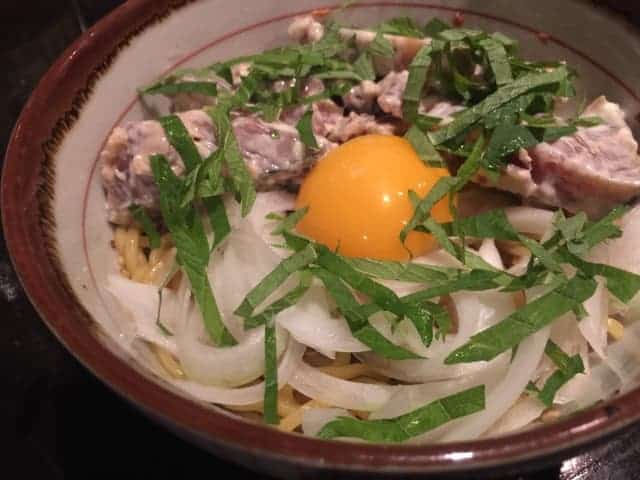
Abura Soba is a type of ramen believed to have originated from shops in Tokyo’s Kokuritsu (National) City or in Musashino. Its history dates back to the 1950s and it was popular in the Tama area of Tokyo and the Kanto region.
Since 1995, it has gained nationwide recognition, and now there are specialty Abura Soba shops across the country, making it a common menu item.
The taste of this noodles dish is special thanks to the unique choices of oil and sauce made by each shop, offering distinct flavors. A basic flavor often involves soy-based sauce on oil, typically sesame oil, coating chewy medium-thick noodles. This creates a harmonious blend, providing a unique experience of unity between the sauce and noodles.
Differences between Abura Soba and Maze Soba
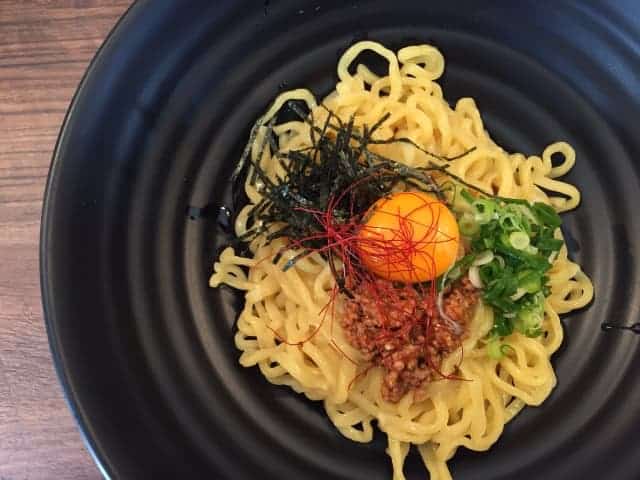
What is Maze Soba?
“Mazesoba” originally came from calling “Abura Soba” by a different name. The reason “Mazesoba” became a separate term is said to have originated in Aichi Prefecture. If you’re from Aichi, you might immediately think of “Taiwan Mazesoba.”
Here, we’ll introduce the differences between Taiwan Mazesoba and Abura Soba. Taiwan Mazesoba is a type of ramen offered in Nagoya, Aichi, and is one of the dishes representing “Nagoya Meshi,” popular in the region.
Taiwan Mazesoba consists of thick noodles topped with a soup-less mixture called “Abura Soba,” flavored with Takana mustard greens and garlic. The ingredients mainly include Taiwan minced meat, chopped leeks, fish powder, egg yolk, and grated garlic, among others. Before eating, you mix all these ingredients together, creating a unique blend. Originating in Nagoya in 2008, Taiwan Ramen was born in a noodle shop. Originally attempting to make Taiwan Ramen, the shop faced challenges with the soup not matching the Taiwan minced meat. This led to the creation of a soup-less version with Taiwan minced meat on top.
Abura Soba vs Maze Soba
Toppings
A significant difference between Abura Soba and Mazesoba lies in the amount and variety of toppings. Abura Soba is very simple, designed to savor the flavor of the noodles. Typical toppings include Menma (bamboo shoots), Chashu (roast pork), and green onions. Additional toppings like seaweed may be lightly added, and variations respecting the original Abura Soba flavor, such as eggs, are also common.
On the other hand, Mazesoba is a dish enjoyed with various toppings, offering a range of flavors. For example, Taiwanese Mazesoba is based on Chinese flavors, including Taiwan minced meat. Instead of the soy-based sauce and aromatic oil found in traditional Abura Soba, Mazesoba typically features Chinese flavors mixed with the noodles.
Furthermore, Mazesoba extends beyond Taiwanese variations. Toppings such as mentaiko (spicy cod roe), mayonnaise, kimchi, cheese, and even soy butter provide a broader range of flavors for this soupless noodle dish. Mazesoba sauces come in different flavors, not limited to Taiwanese style but also including tonkotsu (pork bone broth) based sauces. Mazesoba allows for the enjoyment of diverse tastes.
Way of eating
Originally having the same meaning, Abura Soba and Mazesoba have subtly evolved. The difference lies in how the noodles and sauce are combined. When eating Abura Soba, you mix the sauce and oil at the bottom of the bowl yourself.
In contrast, the sauce for Mazesoba is already mixed with the noodles, providing a pre-seasoned state. This is because Mazesoba tends to have a higher volume of toppings, making it challenging to mix the noodles and sauce effectively. While some Mazesoba places may have less sauce than soup, others have noodles fully soaked in the sauce.
Another difference between the sauces of Abura Soba and Mazesoba is the type of oil used. Typically, Abura Soba uses light, plant-based oils for a smooth and easy-to-eat experience. On the other hand, Mazesoba might incorporate richer, animal-based oils such as lard for added depth.
The Allure of Abura Soba
Abura Soba is currently making a big impact, and what exactly makes it so appealing? There are primarily three aspects of Abura Soba’s charm that contribute to its popularity.
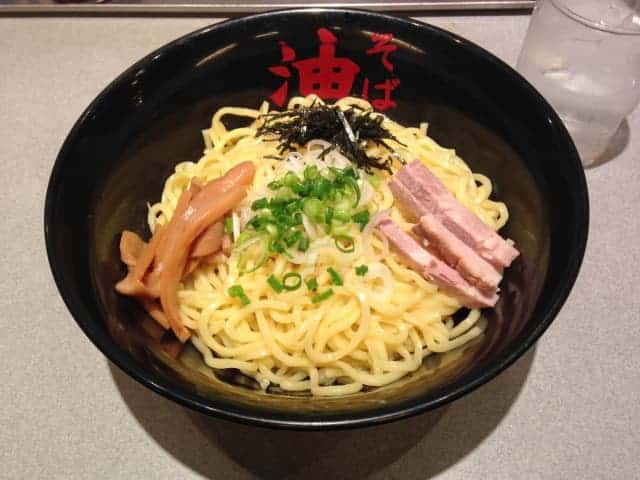
Generous Volume
One of the charms of Abura Soba lies in the volume of noodles. While in ramen, if you want more, you order an extra serving, the presence of soup imposes limits on increasing the quantity of noodles. However, Abura Soba has no soup. Consequently, it offers a larger portion of noodles, creating a satisfying and voluminous experience. This abundance of noodles enhances the sense of fullness.
Affordable Pricing
Another charm of Abura Soba is its affordability. Despite its substantial volume, a standard serving of Abura Soba is offered at our shop for 690 yen. Many other establishments serving Abura Soba also offer it for less than 700 yen. Typically, ramen costs around 800 yen, and with additional toppings or extra servings, it can surpass 1,000 yen. The combination of substantial volume and reasonable pricing makes Abura Soba a popular choice for lunch and even late-night snacks. The cost-effectiveness compared to ramen is a significant aspect of Abura Soba’s charm.
Delicious Without Broth
The most significant allure of Abura Soba lies in its “broth-less” nature. Traditionally, noodle dishes come with soup, whether it’s kake soba or tsukemen. However, Abura Soba breaks away from this convention as it lacks any broth. By incorporating unique sauces and high-quality oil-based seasonings, Abura Soba allows you to savor a rich flavor the moment you slurp the noodles. Despite the absence of broth, it offers a distinctive aroma and taste, introducing a concept not found in traditional noodle dishes. This gap of “being delicious without broth” is the paramount charm of Abura Soba.
How to enjoy Abura Soba?
Topping Magic
After your Abura Soba is ready, quickly add vinegar and chili oil over the noodles. This makes the dish tastier! If you’re new, try two rounds for a regular bowl, three for a big one, and four for an extra-large bowl.
Mix it well
Make sure to mix everything really well while the noodles are still hot. Blend the noodles, sauce, vinegar, and chili oil together evenly. This way, every bite will be yummy!
Enjoy the steam
Eat your Abura Soba while there’s still steam coming out. It tastes best when it’s warm. The heat makes it extra tasty. But be quick, as it won’t be as good once it cools down. Add your favorite toppings, like chopped onions, and enjoy the different flavors!
Various types of Abura Soba
Meat Oil Soba
Oil Soba topped with sweet and savory pork and a seasoned egg. The thick sauce, made with oyster sauce and lard, is generously coated on the noodles, creating a delicious blend. It’s a delight to savor the noodles together with the flavorful meat!
Scrumptious Green Onion and Meat Miso Oil Soba
Treat yourself to a spicy meat miso generously topped with a whole green onion. We also recommend curly noodles to ensure the sauce coats well. Feel free to sprinkle some white sesame seeds for added flavor according to your taste. Enjoy!
Salad Chicken Oil Soba
This Oil Soba has a rich taste but also is healthy! By adding oyster sauce and vinegar to the sauce, it achieves a delicious combination of richness and freshness. Top it with store-bought salad chicken, soft-boiled eggs, and plenty of sesame seeds.
Loaded Oil Soba
Leave everything to the microwave except for boiling the noodles! Mix the microwaved sauce with the boiled noodles, top it with your favorite ingredients, and here you go! Minimal dishes to wash – what a relief!
Abura Soba FAQ
- Is it awkward for women to dine alone at an Abura Soba shop?
Traditionally, there’s a perception that Abura Soba is more suited for solo meals, with a stronger association with men. However, modern shifts in workplace dynamics and evolving dining preferences have made solo dining, even for women, more acceptable.
With more women in the workforce and changing work styles, solo lunches, including enjoying Abura Soba, have become more common and acceptable. Lunch breaks are now seen as valuable personal time for refreshment.
- What toppings are commonly found in Abura Soba, and can they be customized?
Abura Soba commonly features toppings like chopped green onions, garlic, chashu (pork), and menma (bamboo shoots). Many places allow customization, letting customers enhance their bowls with additional toppings according to their preferences.
Abura Soba’s Recipe
Ingredients
| Ingredients (for 2 servings) | Amount |
| Chinese noodles | 2 bags |
| Small green onions | 40g |
| Long green onions | 30g |
| <A> Grated ginger | 1 tsp |
| <A> Grated garlic | 1 tsp |
| <A> Chicken Broth powder | 1/4 tsp |
| <A> Vinegar | 1 tsp |
| <A> Men-tsuyu | 2 tbsp |
| <A> Oyster sauce | 1 tbsp |
| <A> Soy sauce | 1 tsp |
| <A> Sesame oil | 1 and 1/2 tbsp |
Methods
Boil water in a pot, add Chinese noodles, cook as per package instructions, and transfer to a bowl.
In a separate bowl, mix the (A) seasonings, then add to the noodles and mix thoroughly.
Plate the noodles and add toppings like small green onions, long green onions, roasted seaweed, menma, onsen tamago (soft-boiled egg), and white sesame seeds as desired.
Recommended restaurants/stores
Musashino Abura Gakkai Yoyogi (æ¦è”µé‡Žã‚¢ãƒ–ラå¸ä¼š 代々木店)
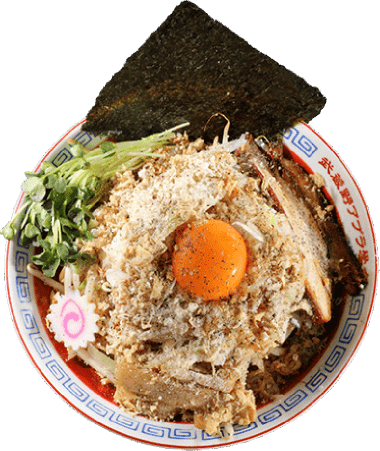
The Yoyogi branch of Musashino Abura Gakuin, founded in Waseda, Tokyo, has established itself as a popular destination among students. With three locations in Ikebukuro, Yoyogi, and Waseda, all attracting long queues, this branch stands out for its spacious and comfortable interior. Regulars are rewarded with an exclusive Black Card, symbolizing exceptional value. Priced at Â¥600, Musashino Abura Gakuin’s Abura Soba surprises with its seemingly ordinary appearance, concealing an intensely rich soy sauce flavor paired with thick noodles. The variety of toppings, such as cheese or garlic, further transforms its character, making it a must-try in Tokyo.
MENSHO TOKYO
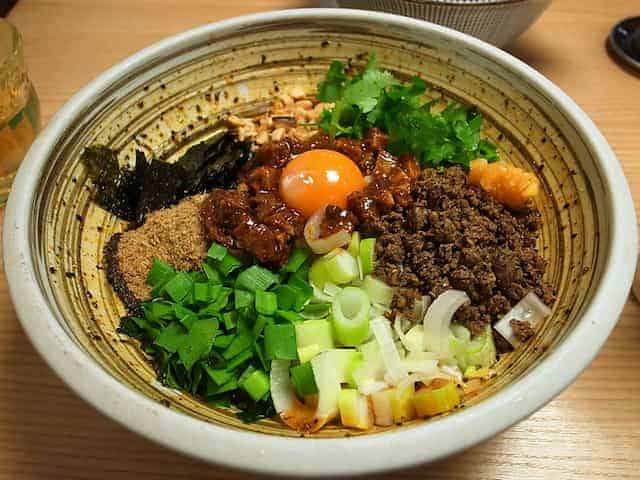
MENSHO TOKYO, located just a 5-minute walk from Korakuen Station or immediately upon exiting Kasuga Station, is the 5th establishment in Shono’s network, famed for its ramen featuring lamb. The ramen, utilizing lamb since its inception, gained significant media attention, solidifying its popularity within three years of operation. Their standout dish, “Maze Hitsuji” priced at Â¥900, features not only lamb but also aged mutton, providing a rich, authentic sheep flavor. Toppings like fish powder and garlic complement the meats, delivering an extraordinary taste worthy of the name “Maze Hitsuji.”
Miharu Ebisu (çž ã¿ã¯ã‚‹ æµæ¯”寿店)
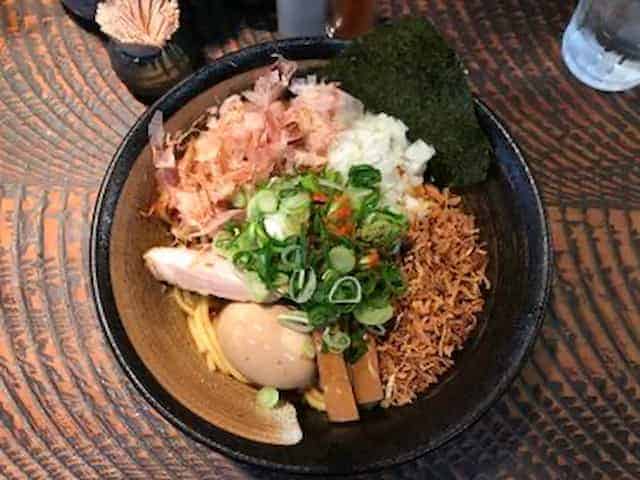
Located in Ebisu, this popular ramen spot, curated by ramen consultant Juko Watanabe, boasts a soup made from bonito and soy sauce, sans any chemical seasonings. Their specialty lies in the perfect harmony between the soup and noodles. A must-visit for those craving delicious seafood-based ramen or abura soba, with the Abura Soba priced at ¥830 being the most favored. Rich in umami from seafood and subtly infused with pork bone essence, it caters to a broad audience, even those not typically fond of seafood. The default addition of flavored eggs is an additional highlight.
Takeaway
Abura Soba, a ramen variant originating from Kunitachi and Musashino City, Tokyo, has captivated enthusiasts with its unique no-soup style. With two establishments claiming the dish’s origin, this noodle culture, rooted in universities, notably appeals to students for its affordability and hearty portions. Taiwan Maze Soba, a variation popularized in Nagoya, adds to the diverse Abura Soba landscape. Recognized for its voluminous noodles, affordability, and the flavorful absence of broth, Abura Soba has become a nationwide sensation, challenging traditional ramen norms and offering a delicious departure from the ordinary.
If you like Japanese noodles, click here or see below for more delicious dishes!
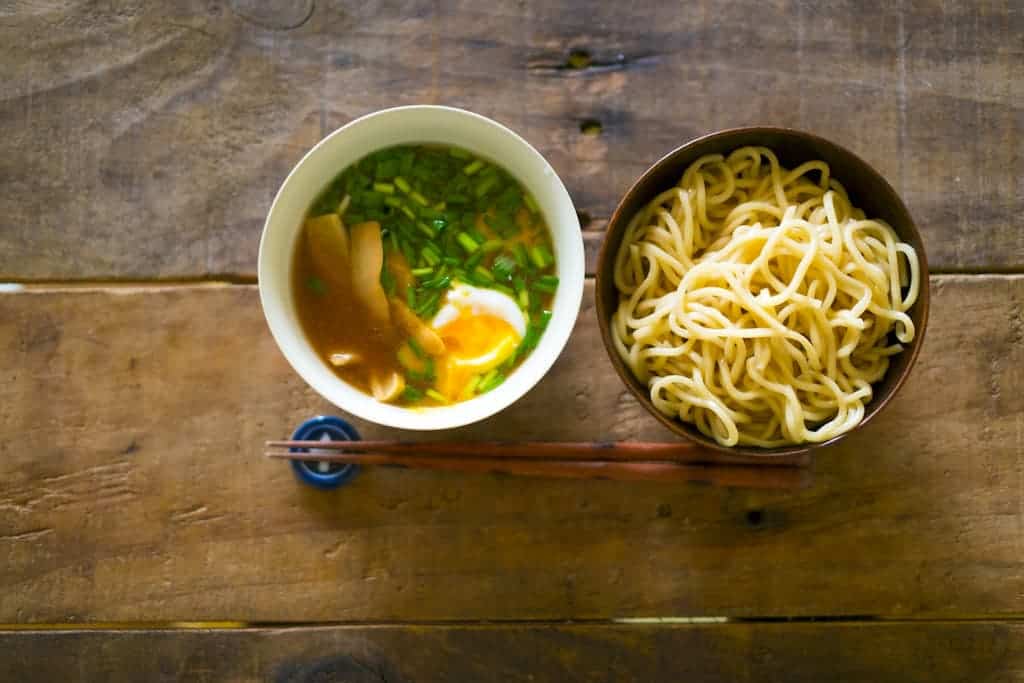
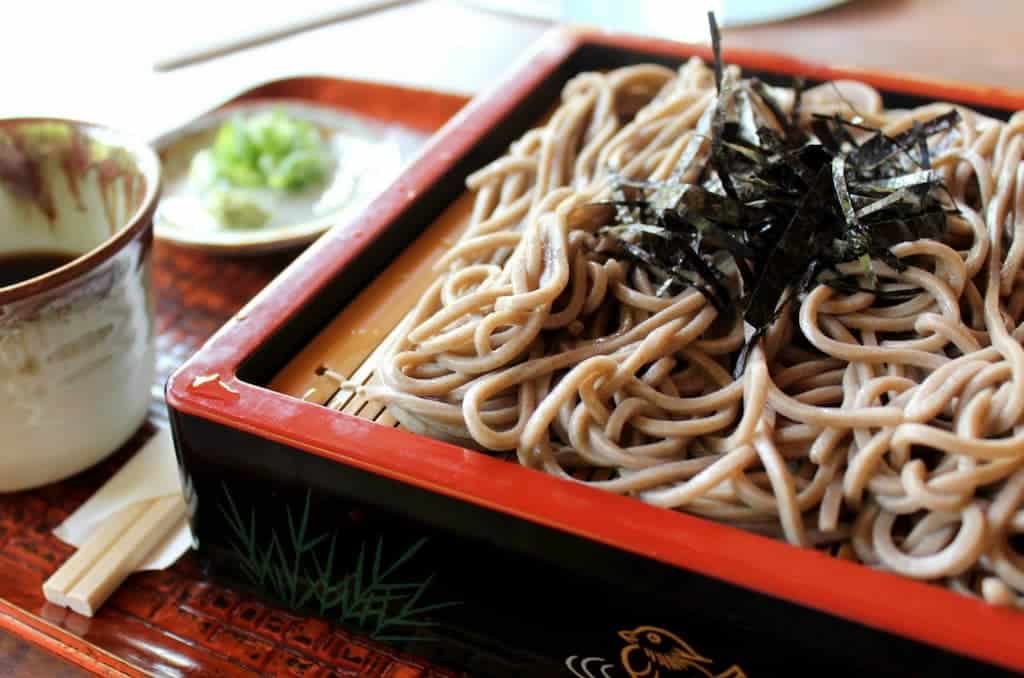
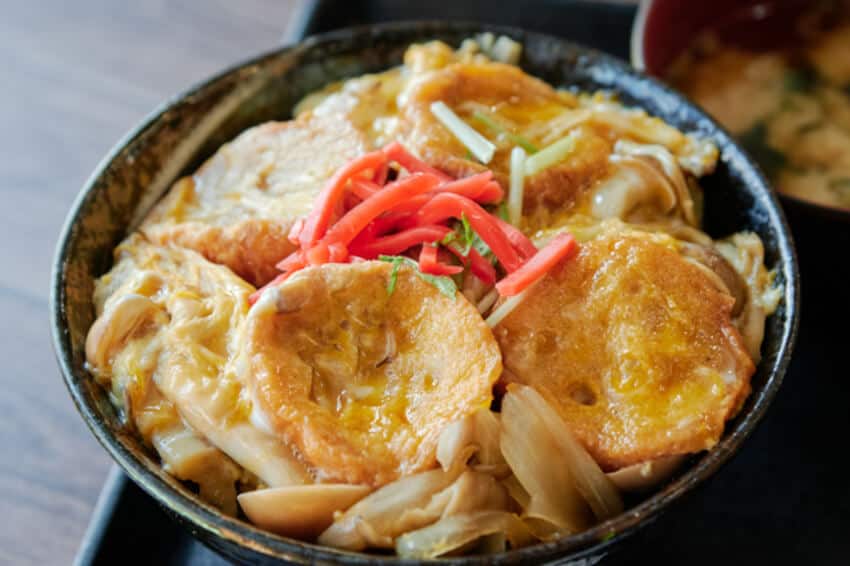
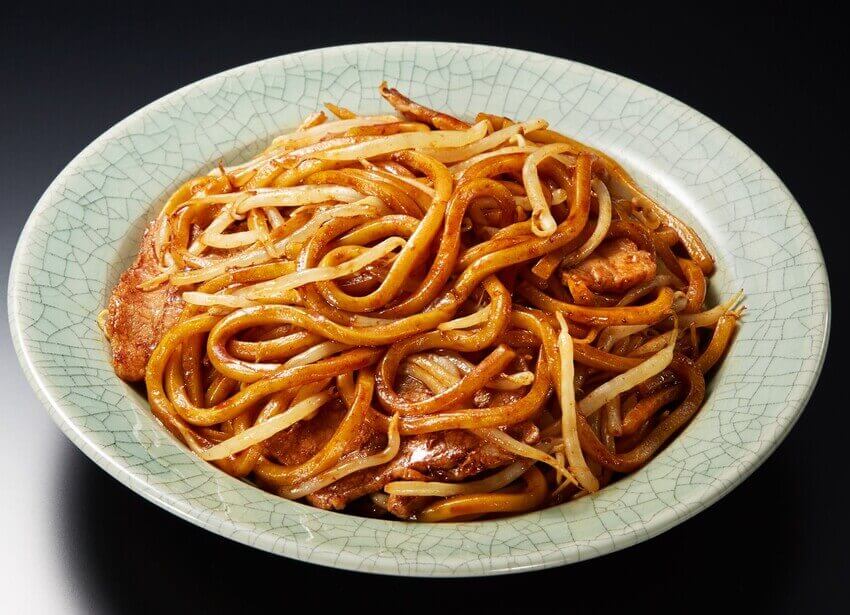





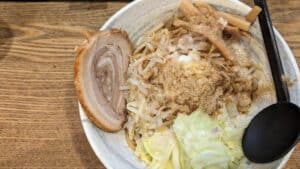
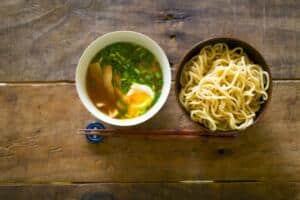
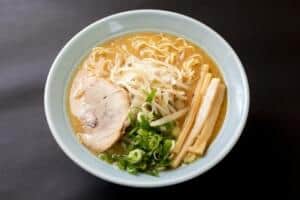
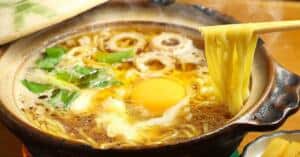
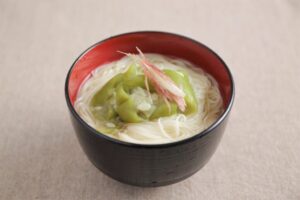
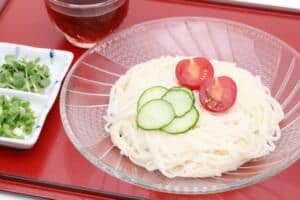
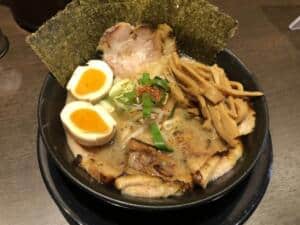
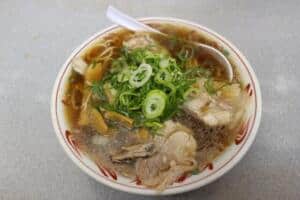
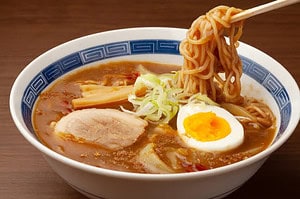
Comments